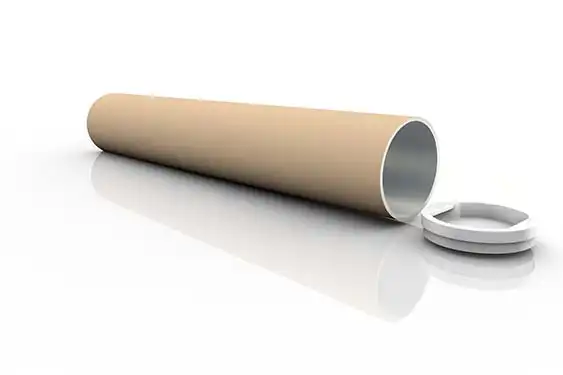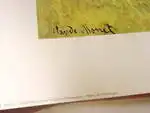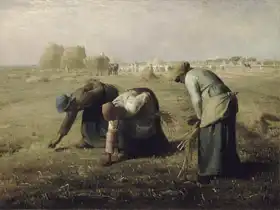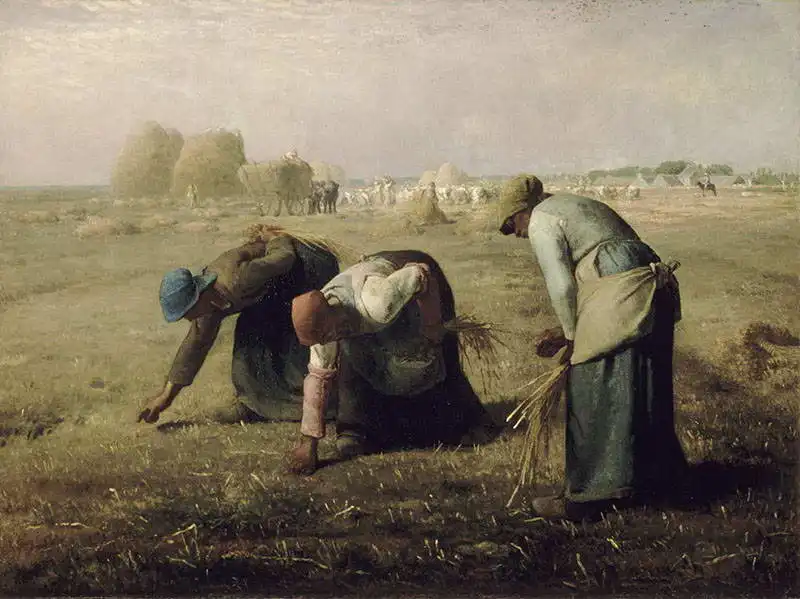About this finishing
Print. The image is printed on the top quality 10-ink HP Z9PS printer on HP matte 270 g / m2 paper. You can choose any size to an accuracy of 1 cm. A margin of 5 cm around the image is added to the size of the motif.


You can find a detailed description about our finishings
here.
Gleaners
Date:
1857Medium:
oil on canvasLocation:
Musee d'Orsay, Paris, FranceDimensions:
83.5 x 110Three women gather ears of corn left after the harvest. They are wearing clothes typical of the region of Millet's birth, their aprons are tied around their waists so that they can collect the ears better. Women's scarves are made in blue, yellow and red (in three basic colors). The figures are very simplified, as can be seen, for example, from the face of the woman on the right. In the background, under the supervision of a rider on horseback, the harvest is taking place. The figures bow to the ground, bend their backs and do not exceed the horizon. The image thus expresses the oppression that the poor people received in Millet's time.
Millet painted picture Gleaners in 1857. Prevailing color of this fine art print is green and its shape is landscape. Original size is 83.5 x 110. This art piece is located in Musee d'Orsay, Paris, France. This image is printed on demand - you can choose material, size and finishing.
Jean-Francois Millet (1814-1875). At the outset of his career, he refused the stereotyped concept of painting and became a free portrait painter. He influenced
Impressionists through his selection of topics:
he painted simple people, poor farmers and the humility of hardworking people. He loved the countryside where he lived, devoted a lot of energy for rural people. Millet’s paintings are characterized by an interesting, gold and melancholy light that gives his landscapes a religious character.
The Angelus - church bells in the distance strike as two people say a prayer of thanks for the harvest (ironically, the Louvre auctioned this painting for an astronomical sum).
Gleaners. The monumentality of characters achieved through simplification of the environment (which was later used by
Seurat) is clamped from above by the horizon. The image probably expresses the oppression of peasants (especially women without voting rights) after 1848.



